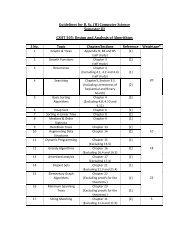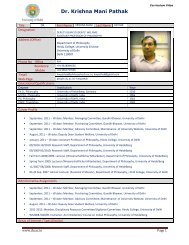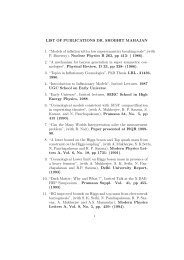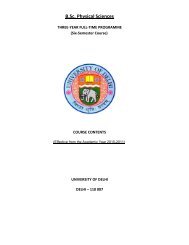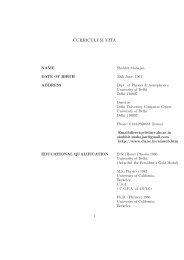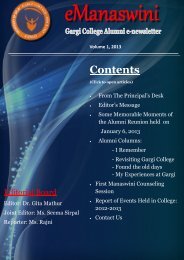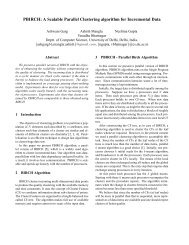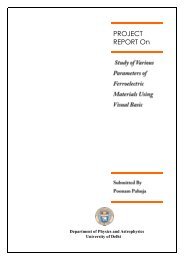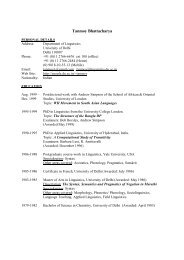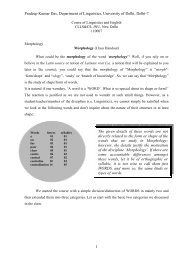Book-Review Thich Nhat Hahn, Understanding Our Mind, New Delhi ...
Book-Review Thich Nhat Hahn, Understanding Our Mind, New Delhi ...
Book-Review Thich Nhat Hahn, Understanding Our Mind, New Delhi ...
- No tags were found...
Create successful ePaper yourself
Turn your PDF publications into a flip-book with our unique Google optimized e-Paper software.
Further, consciousness receives and is impregnated with all the experiences andperceptions that come to us and then become seeds in our store consciousness.Each of these seeds is stored there, unmanifested, until the conditions for itsmanifestations are present (p.33). He further points out that as a result of themanifestation of unwholesome seeds in our consciousness, our mind distorts ourperception and we are tricked into believing that our perception of reality iscorrect. This leads us to erroneous conclusions about things around us. Hence “allour suffering arises from our failure to recognize things as they are”(p.30). Inother words, whether we have happiness or not depends on the seeds that arestronger in our store consciousness (p.45). These seeds remain hidden deep in aperson’s consciousness and he/she becomes aware of them only when they matureand manifest in that person’s mind consciousness. “If there are strong seeds ofunhappiness, anger, discrimination, and delusion, he will suffer greatly, and it islikely that through his actions he will water these unwholesome seeds in others. Ifhis seeds of understanding, compassion, forgiveness, and joy are strong, not onlyis he capable of true happiness but he will be able to water the seeds of happinessin others.” (p.46). However, when the seeds are dormant, we cannot see them(p.58) and we can recognize and nourish the wholesome seeds within ourselves aswell as in others by practicing mindfulness (pp.26-27). Thây believes that each seedin our store consciousness is both individual and collective at the same time: “Thecollective is made of the individual, and the individual is made of the collective”(p.41). According to him, “the collective aspect of seeds in our consciousness alsocomes from our ancestors and from all those who have gone before us. The seedsin our consciousness contain the experiences, ideas, and perceptions of manypeople throughout space and time”(p.43). The conceptual base laid out by Thâyin <strong>Understanding</strong> <strong>Our</strong> <strong>Mind</strong> has some commonalities with Carl Jung, according towhom, the emotions and experiences of suffering and happiness in our minds alsoreflect collective consciousness (p.43).According to Thây, each of us is an aggregation of our actions which inturn are both the cause and result of seeds in our store consciousness. Each of ouractions sows seeds in our consciousness, and our store consciousness preservesand maintains these seeds. When we die and transform from one form of being toanother, the seeds of our actions as well as the seeds that we receive from ourancestors, friends, and society, travel with our store consciousness acrossgenerations (pp.38-49).“<strong>Our</strong> seeds carry the habit energies of thousands of years....Because of habit energies, we are not able to perceive things as they truly are. Weinterpret everything... in terms of our habit energy. If you crumple a sheet of paper,it is difficult to make it lie flat again. It has the habit energy of being crumpled. Weare the same” (p.49). However, it is possible for us to change our habit energieswhich are the fruit of our behavior, formed by the environment in which we live aswell as our reactions to things. Thây points out that through the practice ofmindfulness, we can observe our habit energies and begin to transform them (p.50).Moreover, through the practice of mindfulness we can create new and more11



